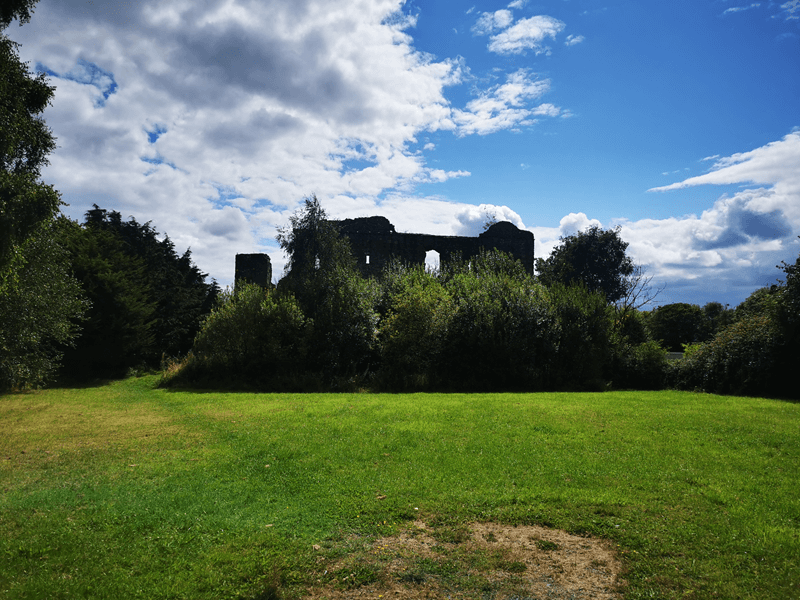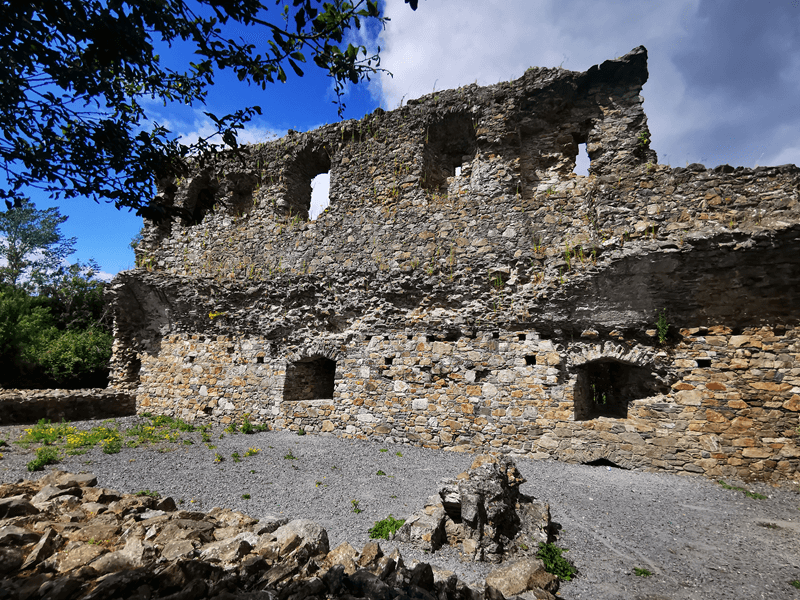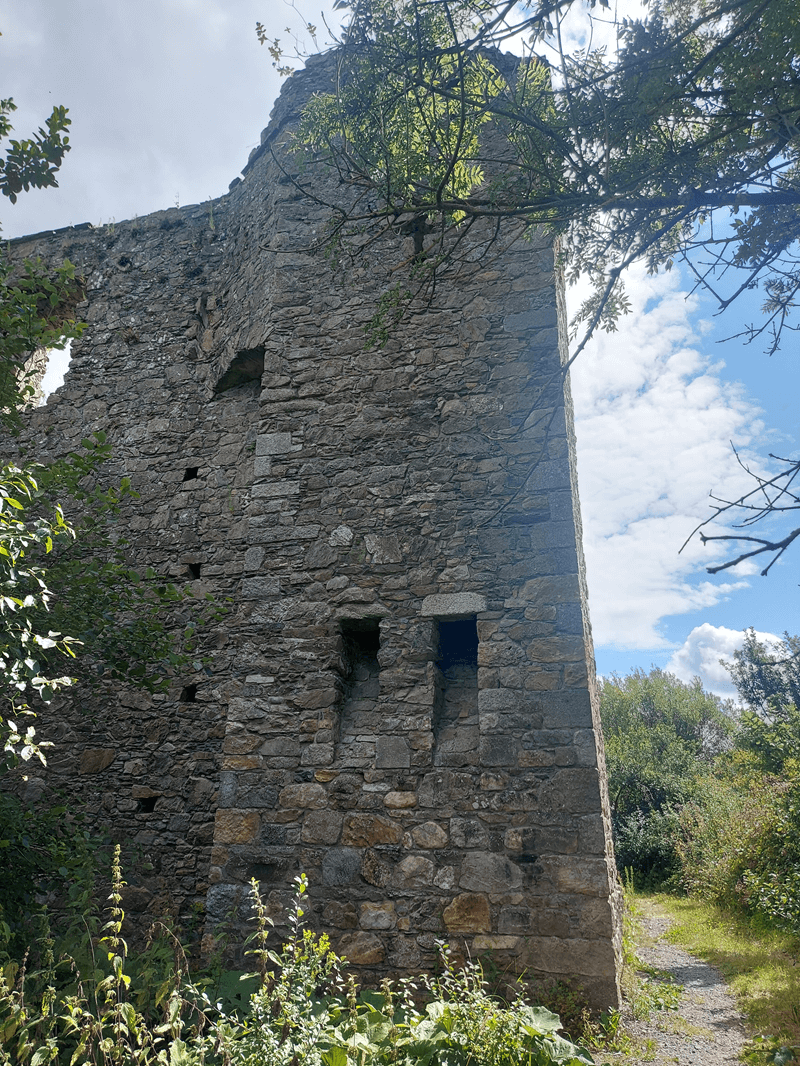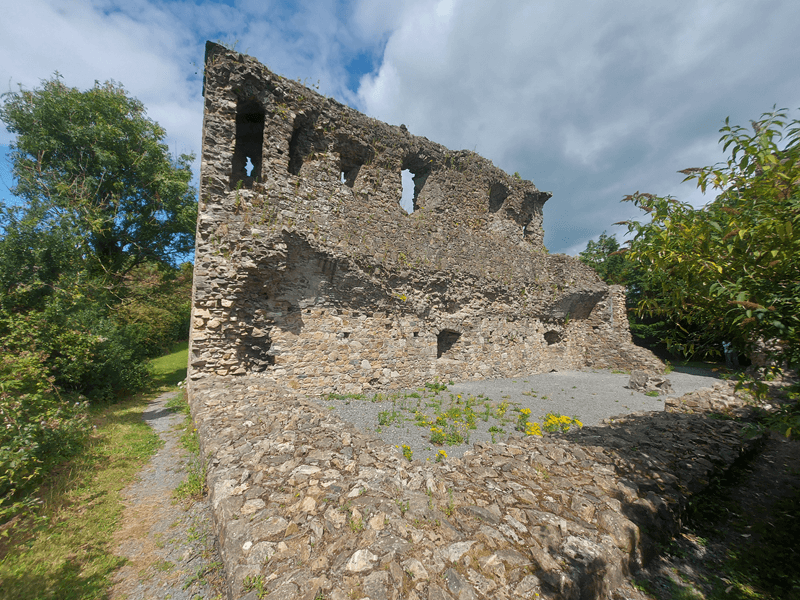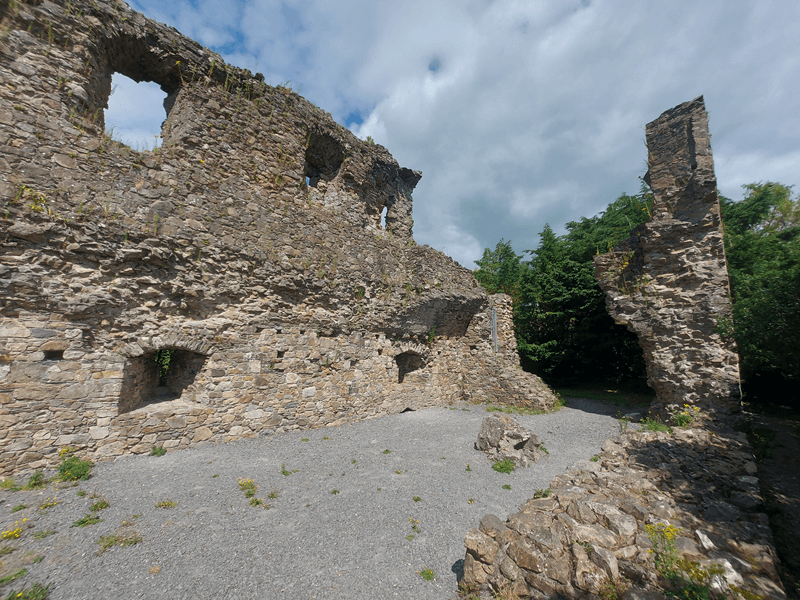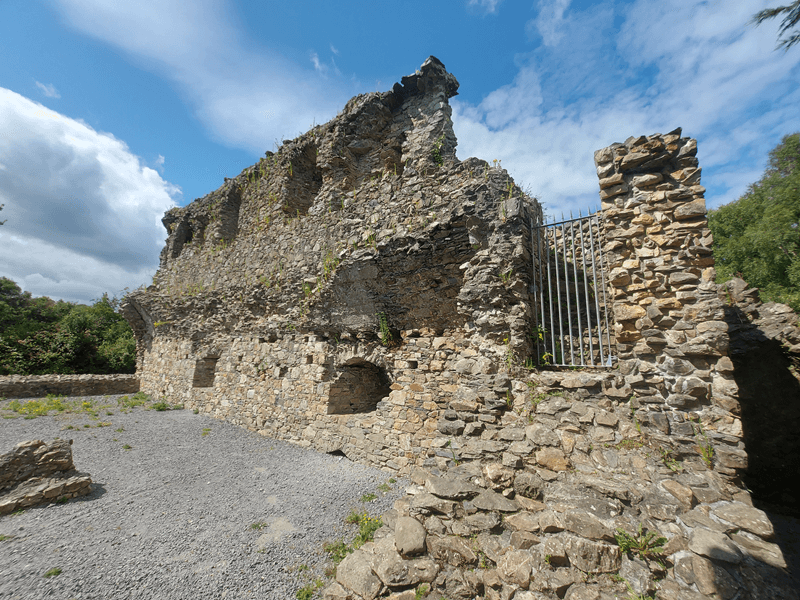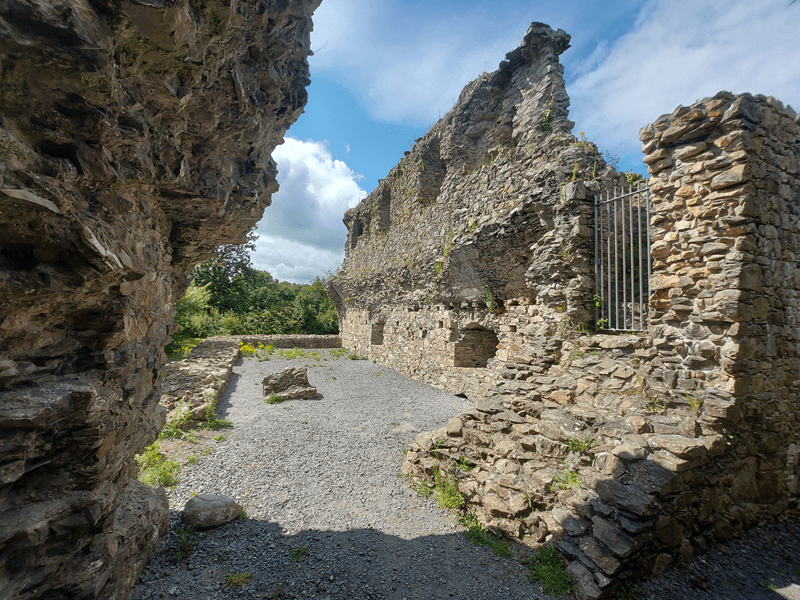History
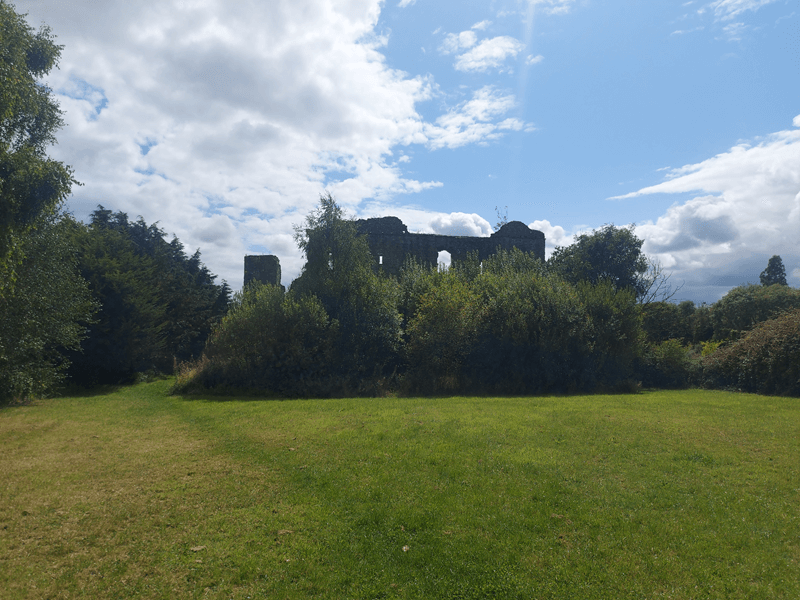
This stoney “hall house” castle is located in County Wicklow near Delgany, close to the eastern Irish sea [1].
Some sources claim that Walter de Bendeville, who owned the land around Delgany in 1225, might have been responsible for the construction of the castle [1, 3]. However it is believed that the castle takes its name from Albert de Kenley, appointed Sheriff of Kildare in 1300, who probably received it in the late 13th century, after marrying Joan, the widow of Ralph Mac Giollamocholmog (Sir Ralph Fitzdermot), who also owned Rathdown Castle [1, 4].
The Gaelic Mac Giollamocholmog family were the dominant Irish dynasty in the region, who were allied with the Anglo-Normans who had invaded Ireland in 1169, hence preserving peace and prosperity in the Wicklow area [3]. However, since the end of the 13th century, the local Uí Broin (O’Byrnes) and Ó Tuathail (O’Tooles) started rebelling against the Anglo-Norman settlements [3]. This justifies why the purpose of Kindlestown castle was to protect against attacks from the native Irish [1, 5].
In the 14th century, the O'Byrne family burned the nearby Rathdown castle and lately in 1377 they also took Kindlestown castle [1, 2]. Eventually, Robert Wikeford, Lord Chancellor of Ireland, managed to recover the castle, which later passed to the Archbold family [1, 2], who where fighting against the Irish in the mountains of Leinster [6]. In more detail, John Archbold was probably the first Archbold living at Kindlestown Castle towards the end of the 14th century [6]. Under the Archbolds, Kindlestown thrived and the castle was completed and sorrounded by a large and prosperous property, till the first half of the 17th century [1, 2, 5].
In 1630, due to debts, Edward Archbold sold Kindlestown to William Brabazon, 1st Earl of Meath [1, 2], whose family occupied the castle probably till the beginning of the 18th century [5].
In [5, 7, 8] it is reported that the castle was involved in the Cromwellian wars.
According to sketches by William Frazer and George V. Du Noyer dating 1843, Kindlestown castle had already fallen into ruin by the first half of the 19th century [4, 7].
As stated in [8], the property was sold to the Irish State in 1930 by the La Touche family.
Extensive details about the castle's architecture, along with other interesting information, can be found in [3].
References
- [1] Wikipedia, Kindlestown Castle
- [2] Greystones Archaeological & Historical Society, Journal Volume 1 1992.
- [3] Excavations.ie, 2001:1354 - KINDLESTOWN CASTLE, Delgany, Wicklow
- [4] Rathdown: Wicklow's ancient heartland, KINDLESTOWN CASTLE
- [5] Ireland In Ruins, Kindlestown Castle Co Wicklow
- [6] Rathdown: Wicklow's ancient heartland, ARCHBOLD FAMILY
- [7] National Library of Ireland, Kindlestown Castle, Co. Wicklow, May 1843
- [8] Delgany Heritage Village, Kindlestown Castle
